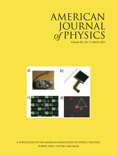
AMERICAN JOURNAL OF PHYSICS
Scope & Guideline
Connecting Tradition with Innovation in Physics.
Introduction
Aims and Scopes
- Educational Methods and Curriculum Development:
AJP highlights research focused on improving physics education through innovative teaching strategies, curriculum design, and the incorporation of technology into the classroom. - Theoretical and Experimental Physics:
The journal publishes significant findings in both theoretical and experimental physics, covering various subfields including quantum mechanics, thermodynamics, and electromagnetism. - Interdisciplinary Approaches:
AJP encourages interdisciplinary research that connects physics with other fields such as biology, environmental science, and engineering, promoting a holistic understanding of physical principles. - Historical Perspectives in Physics:
The journal also explores the historical context of physics concepts, providing insights into the evolution of theories and their implications in modern science. - Innovative Laboratory Experiments:
AJP features novel experimental setups and methodologies that enhance the undergraduate laboratory experience, making complex physics concepts more accessible to students.
Trending and Emerging
- Quantum Computing and Information:
There is a notable increase in publications related to quantum computing and quantum information science, reflecting the growing importance of these fields in modern physics. - Climate Change and Environmental Physics:
Research addressing climate change and its physical implications is on the rise, indicating a shift towards integrating physics education with pressing global issues. - Interdisciplinary Research:
An emerging trend is the integration of physics with other disciplines such as biology, chemistry, and engineering, fostering a collaborative approach to scientific inquiry. - Technological Innovations in Education:
There is a significant focus on innovative educational technologies and methodologies, including the use of virtual labs and simulations to enhance physics learning. - Data Science and Computational Physics:
The intersection of data science and physics is becoming increasingly prominent, with more studies exploring computational methods and their applications in experimental physics.
Declining or Waning
- Purely Theoretical Expositions:
While theoretical physics remains important, there has been a noticeable decrease in papers focused solely on abstract theoretical discussions without experimental validation or application. - Basic Classical Mechanics:
Papers centered on basic classical mechanics concepts are appearing less frequently, possibly as educators and researchers seek to explore more advanced topics or interdisciplinary applications. - Traditional Physics Demonstrations:
Interest in conventional physics demonstrations that lack innovation or new insights appears to be waning, as educators seek more engaging and modern approaches to teaching.
Similar Journals

PHYSICS-USPEKHI
Connecting Researchers Through High-Impact SciencePHYSICS-USPEKHI, published by Uspekhi Fizicheskikh Nauk, is a prominent peer-reviewed journal in the field of physics and astronomy, reaching researchers and professionals since its inception in 1993. With an ISSN of 1063-7869 and an E-ISSN of 1468-4780, this esteemed journal has been classified as Q2 in the Physics and Astronomy category based on the 2023 quartiles, ranking 74 out of 243 journals in its Scopus classification, placing it in the 69th percentile. Although currently not an open access journal, it provides invaluable insights and advancements in the field, fostering an environment for scholarly exchange and collaborative research. Based in Moscow, Russia, PHYSICS-USPEKHI continues to shape the landscape of theoretical and experimental physics, inviting submissions that contribute to its rich legacy of high-impact scientific discourse.

Nuovo Cimento C-Colloquia and Communications in Physics
Exploring the Universe through Peer ReviewNuovo Cimento C-Colloquia and Communications in Physics is a distinguished peer-reviewed journal published by the SOC ITALIANA FISICA, dedicated to the dissemination of novel research and communications in the vibrant fields of Astronomy and Physics. Established in 1978, this journal provides a platform for scientists and researchers to present their findings, fostering academic dialogue and collaboration within the community. As of 2023, the journal holds a Q4 quartile ranking in both Astronomy and Astrophysics and Physics and Astronomy (miscellaneous), reflecting its commitment to contributing to the scientific corpus despite its emerging status in the competitive landscape. Based in Italy, the journal is accessible to a global audience, enhancing its reach and influence. Although currently not an open access journal, it remains an essential resource for researchers and professionals seeking to stay informed on cutting-edge developments in physics and astronomy. Its ongoing convergence of knowledge from 1978 to 2024 promises to enrich the scholarly discourse and advance the frontiers of research in these dynamic fields.
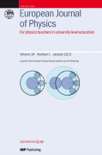
EUROPEAN JOURNAL OF PHYSICS
Charting New Territories in Scientific InquiryEuropean Journal of Physics, published by IOP Publishing Ltd, is a premier international journal serving the diverse field of physics and astronomy. With a commitment to advancing scientific knowledge since its inception in 1980, the journal provides a platform for original research articles, reviews, and topical discussions in various domains, including theoretical and experimental physics. Operating out of the United Kingdom, the journal has achieved a commendable Q2 ranking in the Physics and Astronomy (miscellaneous) category for 2023, reflecting its robust influence in the academic community, alongside a notable Scopus Rank that underscores its relevance in both the Social Sciences and General Physics and Astronomy fields. Although it does not currently offer open access, the journal's traditional publication model ensures rigorous peer review, maintaining high scholarly standards that are imperative for researchers, professionals, and students striving to stay ahead in their respective fields. Don't miss the opportunity to engage with cutting-edge research and contribute to the ongoing dialogue in physics by accessing this vital resource.

Ukrainian Journal of Physics
Pioneering Research for Tomorrow's InnovationsUkrainian Journal of Physics, published by the Bogolyubov Institute for Theoretical Physics of the National Academy of Sciences of Ukraine, stands as a significant platform for the dissemination of research in the dynamic field of physics. With its ISSN 2071-0186 and E-ISSN 2071-0194, the journal aims to foster academic dialogue and innovation among researchers, professionals, and students alike. Recognized with a Scopus ranking that places it in the 26th percentile, the journal offers an array of contributions spanning various domains, including general physics and astronomy. Although currently categorized in the Q3 quartile for 2023, it seeks to elevate its scholarly impact while providing open access to its contents, facilitating wider availability and engagement. With a commitment to publishing high-quality research from 2007 to 2024, the journal embraces interdisciplinary approaches to physics, making it an invaluable resource for anyone dedicated to advancing their understanding and exploration of physical sciences.

LETTERS IN MATHEMATICAL PHYSICS
Fostering multidisciplinary dialogue for groundbreaking discoveries.LETTERS IN MATHEMATICAL PHYSICS, published by Springer, stands as a pivotal platform in the realm of mathematical and statistical physics. With a commitment to disseminating innovative research findings since its inception in 1975, this journal serves both established and emerging scholars by fostering a multidisciplinary dialogue that is vital for the advancement of theoretical concepts and practical applications. The journal boasts an impressive Q1 ranking in both Mathematical Physics and Statistical and Nonlinear Physics categories as of 2023, reflecting its significant impact in these fields, supported by a strong Scopus ranking of 36th and 37th in respective categories. Although it operates on a traditional access model, the journal’s convergence until 2024 ensures a rich repository of literature that aids researchers, professionals, and students in navigating the complexities of mathematical physics. With its strategic location in the Netherlands, LETTERS IN MATHEMATICAL PHYSICS is poised to continue its tradition of excellence, encouraging contributions that deepen the understanding of mathematical frameworks underlying physical phenomena.

PHYSICS TEACHER
Empowering Educators to Ignite a Passion for PhysicsPHYSICS TEACHER, published by the American Association of Physics Teachers, is a premier journal dedicated to enhancing the teaching and learning of physics. With an ISSN of 0031-921X and an E-ISSN of 1943-4928, this journal plays a pivotal role in disseminating innovative teaching methods, research findings, and practical classroom strategies aimed at educators in the field. Recognized for its high academic standards, it holds a prestigious Q2 rank in both Education and Physics and Astronomy categories for 2023. Although it is not an open-access journal, it provides valuable insights and resources that are crucial for educators seeking to improve their pedagogical practices and enhance student engagement. With converged years extending from 1983 to 2024, PHYSICS TEACHER serves as an essential resource for physics educators and researchers striving to foster a deeper understanding of physics among students. The journal not only highlights current trends and methodologies but also serves as a collaborative platform for sharing ideas and best practices in physics education.
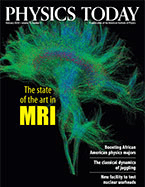
PHYSICS TODAY
Unveiling the Wonders of the Physical WorldPHYSICS TODAY is a prestigious journal published by the American Institute of Physics, serving as a pivotal platform for the dissemination of innovative research and developments in the field of physics and astronomy. With an ISSN of 0031-9228 and an E-ISSN of 1945-0699, this journal has been in circulation since 1948 and is set to continue until 2024. Recognized for its substantial contributions to the scientific community, PHYSICS TODAY holds a significant position within the Q2 quartile of the Physics and Astronomy category as of 2023. Although it does not offer open access, its articles remain crucial resources for researchers, professionals, and students seeking to stay abreast of the latest advancements across a broad range of topics in general physics and astronomy. With a current Scopus ranking of #150 out of 243 and a percentile standing at 38, the journal bolsters its reputation as a reliable source for high-quality scientific discourse. In an era of rapid scientific advancement, PHYSICS TODAY remains dedicated to fostering a deeper understanding of the physical universe, making it an essential read for those invested in the future of physics.
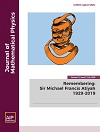
JOURNAL OF MATHEMATICAL PHYSICS
Charting new territories in theoretical physics and mathematics.Welcome to the JOURNAL OF MATHEMATICAL PHYSICS, a distinguished publication dedicated to the burgeoning fields of mathematical physics and statistical and nonlinear physics, published by AIP Publishing. Established in 1960, the journal continually showcases cutting-edge research and theoretical advancements that drive the understanding of complex systems and mathematical formulations within physics. With an impressive Scopus ranking of #38 in Mathematical Physics and #39 in Statistical and Nonlinear Physics, the journal is recognized for its vital contributions to the academic community, achieving a solid Q2 quartile ranking in both categories for 2023. While not an open-access journal, it remains a critical resource for researchers, professionals, and graduate students seeking insights into rigorous mathematical methods and their applications in physical sciences. Engage with the finest research as we converge toward new frontiers from 1960 to 2024, fostering academic collaboration and innovation.

Romanian Journal of Physics
Illuminating discoveries in physics since 2008.Welcome to the Romanian Journal of Physics, a distinguished platform dedicated to advancing the field of physics and astronomy since its inception. Published by EDITURA ACAD ROMANE, this journal plays a pivotal role in disseminating high-quality research from Romania and around the globe, with an impressive impact factor that reflects its rigorous academic standards. With a focus on a broad range of topics in general physics and astronomy, it proudly maintains a Q2 ranking in its category for 2023, positioning itself among the top journals in the field. The journal, which has been converging valuable research contributions from 2008 until 2024, is accessible to a wide audience of researchers, professionals, and students interested in the latest developments and discoveries in physics. While it operates under a traditional publication model without Open Access, its commitment to quality research ensures that the contributions featured in its pages resonate well within the scientific community. We invite you to explore the rich findings published in the Romanian Journal of Physics and to engage with the vital discussions shaping the future of physics.
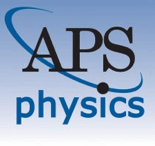
REVIEWS OF MODERN PHYSICS
Fostering Innovation in Physics and AstronomyREVIEWS OF MODERN PHYSICS, published by the American Physical Society, stands as a premier journal in the field of physics and astronomy, evidenced by its esteemed Q1 ranking in the 2023 category. With a notable ISSN of 0034-6861 and E-ISSN of 1539-0756, this journal has been a cornerstone for scholarly excellence since its inception in 1929. Operating from the heart of the United States at One Physics Eklipse, College Park, MD 20740-3844, REVIEWS OF MODERN PHYSICS enjoys a significant reputation, holding a top rank of #1 out of 243 in the Scopus rankings for General Physics and Astronomy, and securing its place in the 99th percentile. While it does not provide open access, the journal remains a critical resource for researchers and students alike, offering comprehensive reviews and breakthroughs that drive innovation and understanding in modern physics. As it converges towards its centennial year in 2024, the journal continues to foster significant academic discourse, making it an invaluable platform for the dissemination of pioneering ideas and research outcomes.